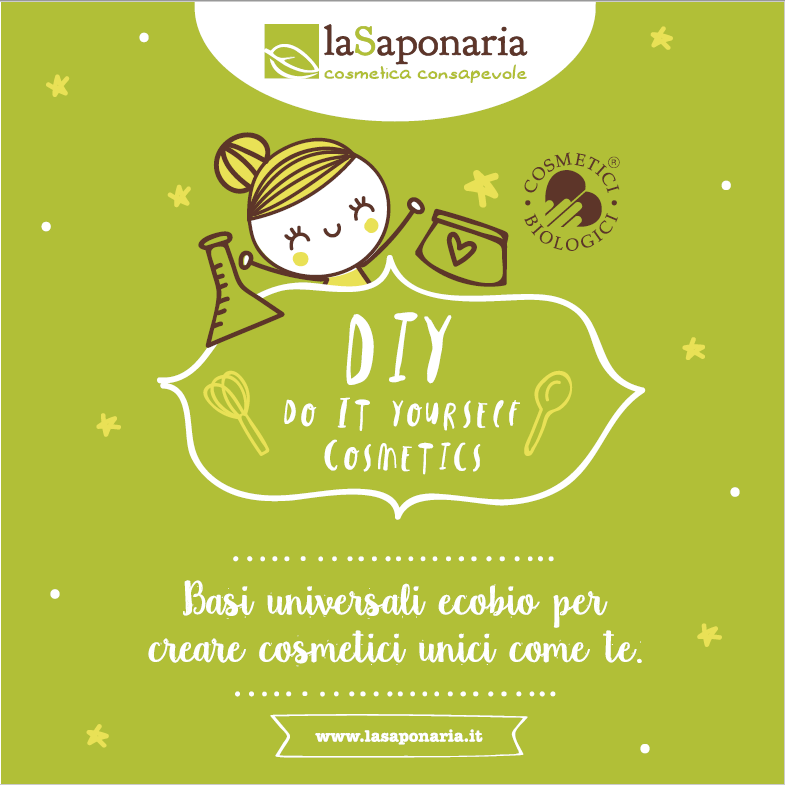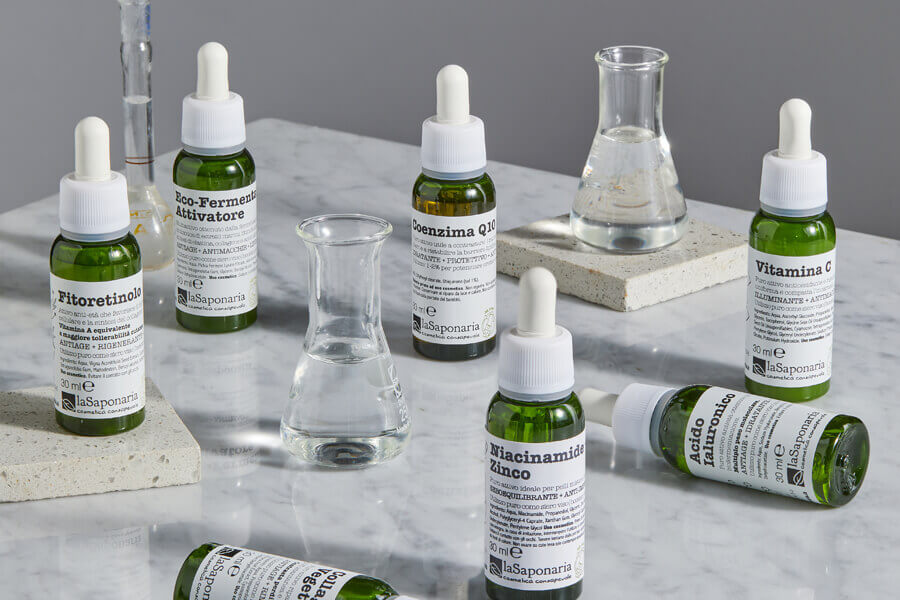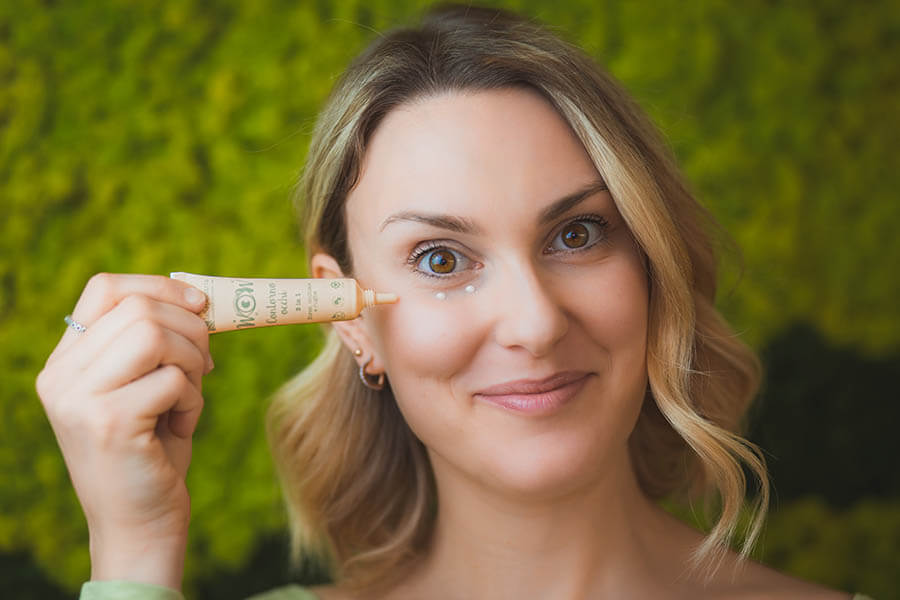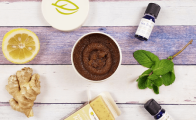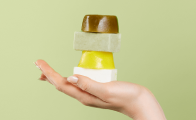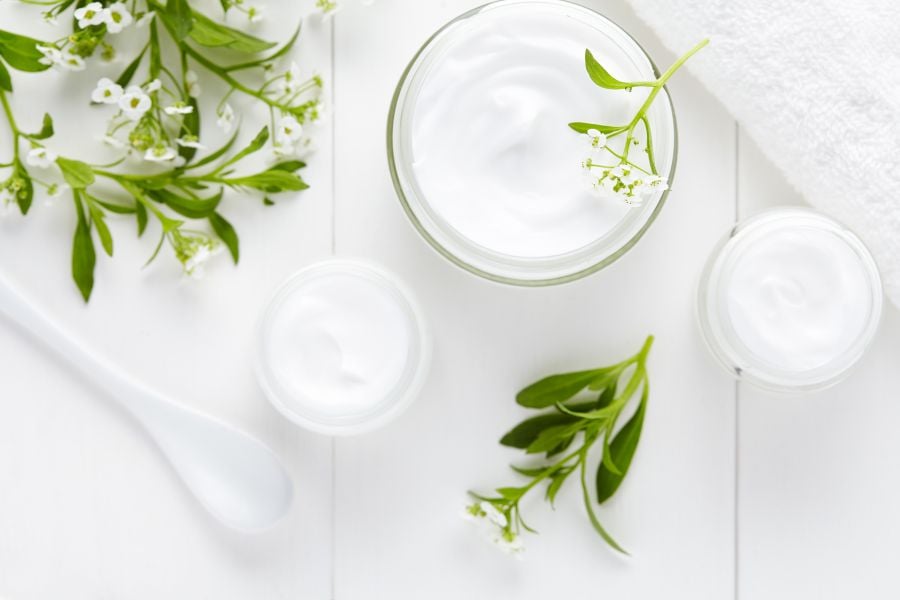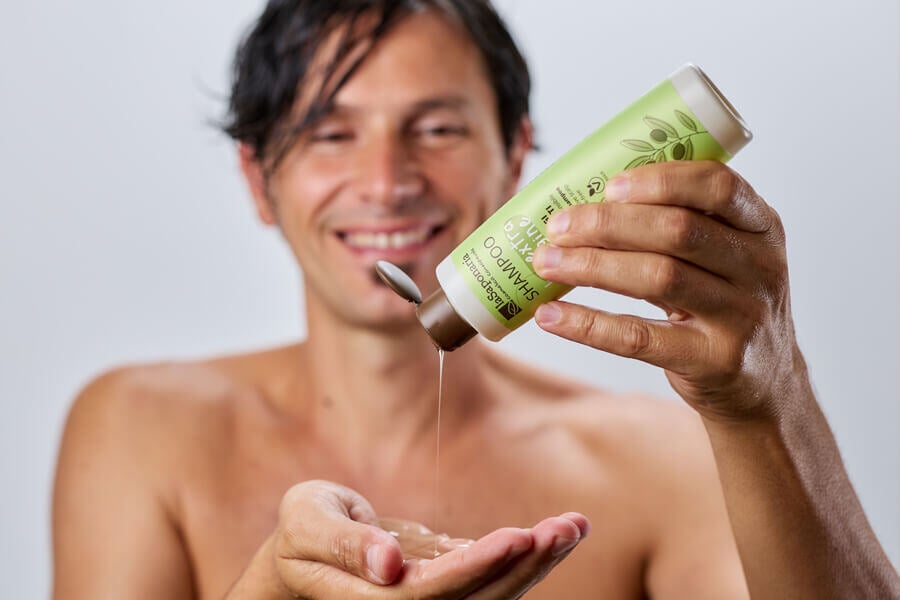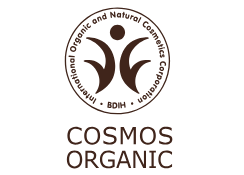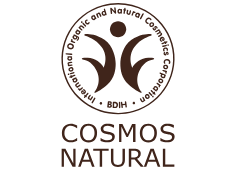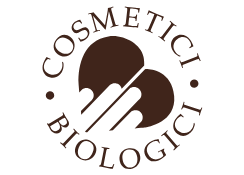The insights of La Saponaria
Salicylic acid: properties, uses, contraindications and natural alternatives
Salicylic acid is a very popular ingredient in cosmetics, especially in the treatment of impure skin. Yet its use is not always recommended: let's see together its characteristics, contraindications and evaluate the natural alternatives.
Salicylic acid is an ingredient widely used in the cosmetic and dermatological industry and at the moment it is all the rage: we find it above all in products for combination and impure skin: in fact, it is known for its exfoliating and anti-inflammatory properties, which make it effective in fighting acne, blackheads and other skin imperfections.
Salicylic acid is a beta-hydroxy acid (BHA) obtained primarily from willow bark. We often find it as a main ingredient in numerous skin care products, for example in lotions, creams and cleansers, and as a component of more intense chemical treatments, such as chemical peels. Its main action is to exfoliate the skin, eliminating dead cells and freeing clogged pores, thus preventing the appearance of pimples and blackheads. Let's find out more about this ingredient. Here's what we'll read in this in-depth article:
- What is salicylic acid used for for the skin?
- What are the benefits of salicylic acid?
- When and how to use salicylic acid?
- What not to mix with salicylic acid?
- Does salicylic acid have contraindications?
- Salicylic acid: the natural alternatives
- Conclusions
What is salicylic acid used for for the skin?
Salicylic acid has several uses and benefits for the skin. Here are some of its main purposes:
- Acne treatment: Salicylic acid is widely used in acne treatments and products to combat skin blemishes. Its exfoliating action helps remove dead cells and excess sebum that can clog pores and cause pimples to form. Plus, it has antibacterial properties that help reduce inflammation and prevent bacterial overgrowth.
- Blackhead Reduction: Blackheads, or open comedones, are caused by sebum, dead skin cells and impurities blocking pores. Salicylic acid helps to gently remove these impurities and exfoliate the skin, thus reducing the appearance of blackheads and improving skin texture.
- Skin exfoliation: thanks to its exfoliating action, salicylic acid removes dead cells and promotes cell renewal. This can make the skin brighter, improve its texture and promote the penetration of other beneficial ingredients contained in the products that we are going to include in the next steps of our skin care.
- It is then also used in the treatment of warts and seborrheic keratosis but in these cases it is always better to hear the opinion of a doctor: before using salicylic acid or products containing this ingredient, it is advisable to consult a dermatologist or skin care professional. skin for an adequate assessment and personalized advice.
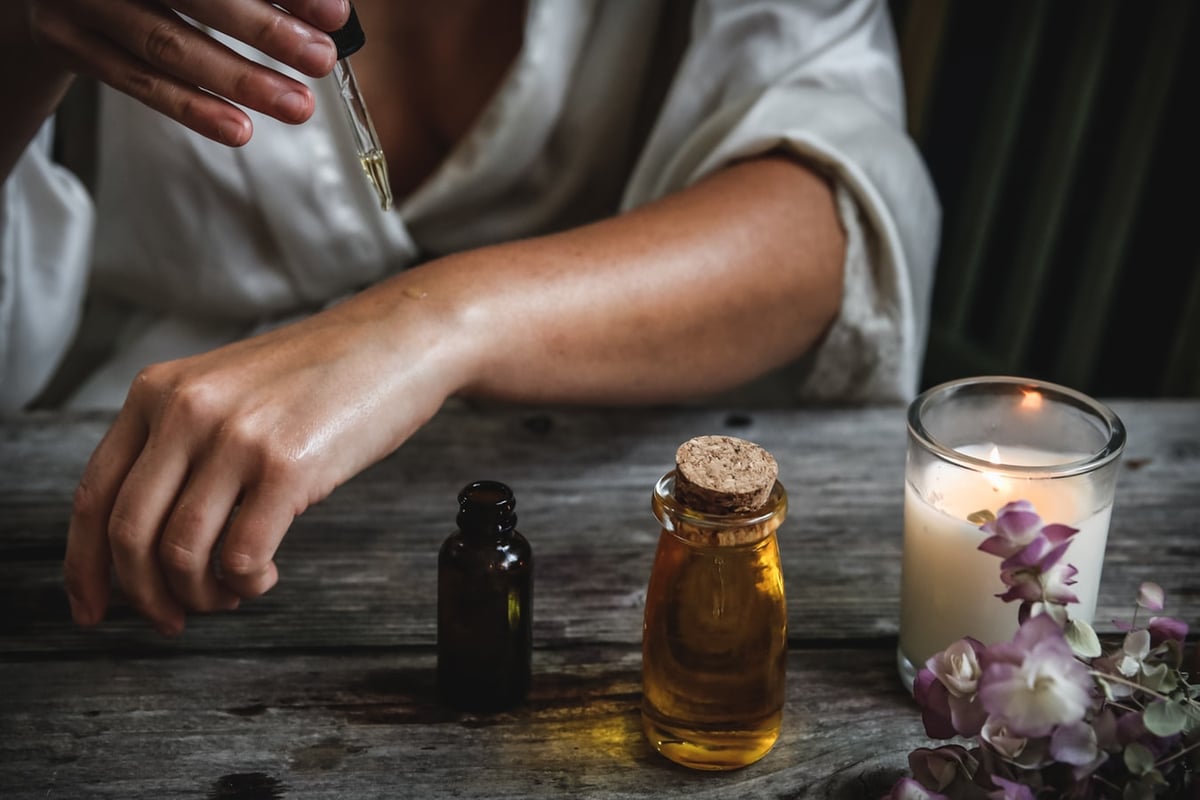
What are the benefits of salicylic acid?
Salicylic acid offers several benefits for the skin. Here are some of the main benefits associated with its use:
- Exfoliating action: as we have seen salicylic acid has the ability to gently exfoliate the skin, removing dead cells and excess sebum and promoting cell renewal. Regular exfoliation makes skin brighter, smoother and younger looking.
- Acne Treatment: One of the best known benefits of salicylic acid is its effect in the treatment of acne. Salicylic acid penetrates pores and dissolves impurities that can cause pimples, such as sebum, dead skin cells and bacteria. It also reduces skin inflammation associated with acne, helping to reduce the appearance of new lesions and improve skin health.
- Blackhead Reduction: Blackheads, or open comedones, form when pores are clogged with sebum and dead skin cells that oxidize in the air. Salicylic acid helps to gently but effectively exfoliate the skin, removing these impurities and reducing the formation of blackheads. This can help improve the clarity and cleanliness of your pores.
- Antibacterial action: salicylic acid has antibacterial properties, which help fight the bacteria responsible for acne and skin infections. By reducing the presence of bacteria on the skin, it can help prevent the growth of pimples and maintain healthier skin.
When and how to use salicylic acid?
Salicylic acid can be used in different ways and in different formulations, depending on the needs of the skin and the specific product. Here are some general guidelines on using salicylic acid:
- Choosing the right product: Salicylic acid can be found in various skin care products, such as creams, lotions, toners, masks and peels. Choosing the right product depends on the needs of your skin and the condition you wish to treat. Be sure to read the product instructions carefully before use and follow the manufacturer's directions.
- Determine the appropriate concentration: Salicylic acid comes in different concentrations, ranging from 0.5% to 2% or more. For people with sensitive skin or who are new to using salicylic acid, it may be advisable to start with a lower concentration and gradually increase as needed.
- Skin Cleansing: Before applying salicylic acid, make sure you cleanse your face or the affected area thoroughly. Use a gentle cleanser suited to your skin type to remove makeup, excess oil and impurities.
- Targeted Application: Apply salicylic acid to affected areas only. Avoid applying it around the eyes, around the lips or on any open wounds or skin irritations. Use a small amount of product and gently massage it into the skin in circular motions.
- Frequency of use: The frequency of use depends on individual tolerance and the concentration of the product. If tolerated well, it can be used up to a maximum of twice a day. However, if irritation or excessive dryness is felt, it will be necessary to reduce the frequency or better, stop using it: it is in fact an ingredient that can excessively sensitize the skin.
- Sunscreen: Because salicylic acid can make your skin more sensitive to the sun's rays, it's important to always use a broad-spectrum sunscreen with a high sun protection factor (SPF) during the day, even if you're not in direct sun.
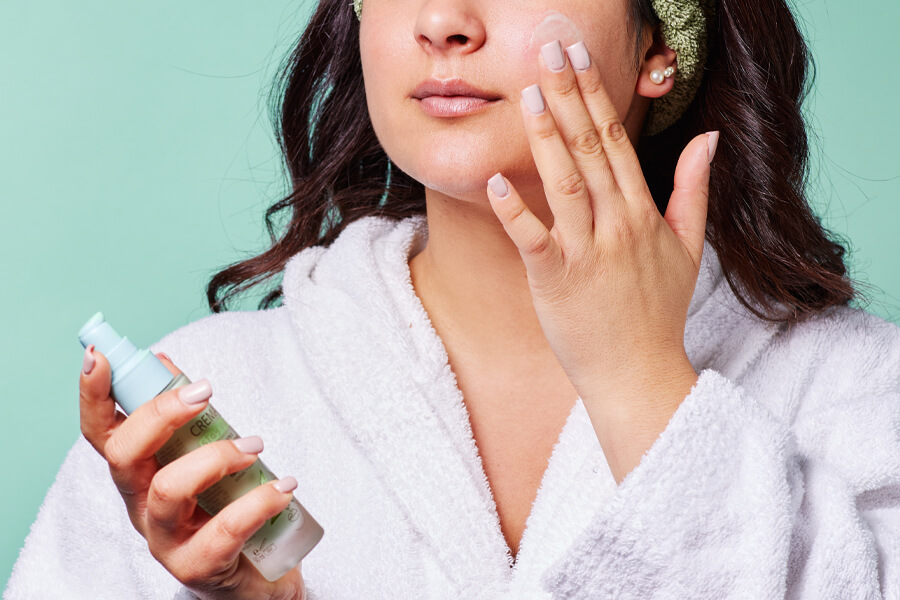
What not to mix with salicylic acid?
There are some precautions to take regarding substances that may not be advisable to mix salicylic acid with. Here are some ingredients or products to avoid using together with salicylic acid:
- Other exfoliating agents: Using more than one exfoliating agent at the same time may be too harsh on the skin and cause irritation. Therefore, it is advisable to avoid using other products containing exfoliating acids at the same time, such as glycolic acid or lactic acid. If you want to use multiple exfoliating products, consult a dermatologist to determine the best sequence of use and compatibility between the different ingredients.
- Retinoid products: The combined use of salicylic acid and retinoids, such as retinol or tretinoin, could cause excessive dryness and irritation on the skin. These ingredients can be used separately at different points in your skincare routine, as directed by a dermatologist.
- Products containing alcohol: Some skin care products, such as toners or cleansers, may contain alcohol. The combined use of salicylic acid and alcohol can cause dryness and irritation, especially for people with sensitive skin. It is best to use alcohol-free products or choose formulations that contain a minimal amount of alcohol.
- Products containing irritating or abrasive substances: Avoid using salicylic acid at the same time with products containing irritating or abrasive ingredients, such as abrasive granules or microbeads. This can increase the risk of skin irritation or damage.
- Products containing strong chemical peels: The use of salicylic acid together with strong chemical peels, such as trichloroacetic acids (TCA) or alpha-hydroxy acids (AHA) in high concentrations, should be avoided. These treatments can be very harsh on the skin and can cause serious damage or irritation when used in conjunction with salicylic acid.
- Products for sensitive skin: If you have sensitive skin, you may need to use salicylic acid with caution and prefer formulations specifically for sensitive skin. It may also be helpful to test a small area of skin to assess tolerance before using the product on the entire face or affected area.
Does salicylic acid have contraindications?
Yes, salicylic acid may have some contraindications and side effects that should be taken into consideration before using products containing this ingredient. Salicylic acid can be too harsh for some people, especially those with sensitive or intolerant skin. Excessive or prolonged use of products containing salicylic acid can cause skin irritation, redness and dryness. In some cases, the application of products containing salicylic acid can cause an allergic reaction, which can be manifested by itching, swelling or a rash. Therefore, it is always advisable to test a small area of skin before using a product containing salicylic acid all over the face. Here are some of the main contraindications of using products with salicylic acid:
- Sensitivity or allergy: Some people may be allergic or sensitive to salicylic acid. If you have had allergic reactions in the past to this ingredient or to other salicylates, it is advisable to avoid the use of products containing salicylic acid.
- Sensitive Skin: People with particularly sensitive skin may experience irritation, redness, or excessive dryness when using salicylic acid. It is advisable to test on a small area of skin before using it on the whole face or affected area.
- Broken or Irritated Skin: Salicylic acid may cause burning or irritation when applied to broken skin, open wounds, cuts, or skin irritations. It is important to avoid applying to these areas and to wait for the skin to heal before using salicylic acid.
- Pregnancy and breastfeeding: If you are pregnant or breastfeeding, it is advisable to consult a doctor before using products containing salicylic acid. Although there is no definitive evidence of significant risks associated with its topical use, it is preferable to follow the doctor's instructions to ensure the safety of the baby and the mother.
- Overuse: Excessive use of salicylic acid can cause dryness, irritation, and excessive peeling of the skin. It is important to follow product instructions carefully and not to use it more frequently or in larger amounts than recommended.
- Interaction with other drugs: Salicylic acid can interact with some medications, such as blood thinners or diabetes medications. If you are taking any other medications, consult your doctor or pharmacist before using products containing salicylic acid to check for any interactions.
- Possible endocrine disruptor: It is important to know that salicylic acid is being studied and discussed regarding its potential as an endocrine disruptor. Endocrine disruptors are chemicals that can interfere with the normal functioning of the endocrine system in the human body. This system regulates and controls the balance of hormones, which are responsible for many crucial functions in our body. Although studies on the effects of salicylic acid as an endocrine disruptor are still ongoing, some researchers have raised concerns about its ability to affect the endocrine system. For example, a study published in 2016 in the Journal of Applied Toxicology suggested that salicylic acid may have negative effects on the male reproductive system, by interfering with sperm production and testicular function in laboratory rats. However, it is important to emphasize that more research is needed to fully confirm and understand these effects in humans.
As a result, many people are starting to look for natural alternatives to salicylic acid to treat combination to oily skin. You can find a wide range of products based on natural ingredients that offer exfoliating, anti-inflammatory and antibacterial properties, helping to maintain healthy skin without the potential risk of endocrine disruptors.
Salicylic acid is being studied as a possible endocrine disruptor

Salicylic acid: the natural alternatives
Fortunately, there are natural alternatives that can offer salicylic acid-like benefits without the possible side effects. Here are some natural alternatives that have proven effective in treating combination to oily skin:
- Succinic acid: among the most talked about active ingredients of the moment there is certainly the Succinic acid, particularly appreciated by acneic skins for various reasons. Studies have shown significant activity of succinic acid against one of the bacteria responsible for the formation of acne, Propionibacterium Acnes. It is the ideal ally for treating combination skin, also thanks to its smoothing action: it counteracts imperfections and spots, also due to age, it helps to make wrinkles and scars left by acne less evident, it makes the complexion uniform. Succinic acid has a high regenerating power but at the same time it is dermocompatible and non-photosensitizing. Gently and effectively helps skin regeneration, making it brighter and more toned. Finally, it helps to counteract free radicals by carrying out an antioxidant and anti-aging action. It is therefore also suitable for the most sensitive skins and unlike salicylic acid it has no particular contraindications
- Shikimic acid: it is extracted from star anise and is ideal for counteracting skin imperfections. The most recent studies have highlighted an inhibitory action of shikimic acid against Propionibacterium Acnes which, as we have seen, is one of the main bacteria responsible for acne. It also has the ability to regulate the production of sebum. It is also a delicate exfoliant that favors skin turnover without irritating the skin, making the complexion uniform and luminous. Also in this case it proves to be a very well tolerated ingredient even by the most sensitive skins
- Azelaic acid: it is a natural substance produced by a yeast normally present in the skin flora; it is also found naturally in wheat, rye and barley. It is among the most used substances in anti-acne treatments thanks to its bactericidal and bacteriostatic action against the microorganisms found on the superficial layers of the epidermis, causing the characteristic skin lesions of acne. The delicate exfoliating action that characterizes it makes it excellent for treating and lightening pimple spots and making the skin brighter and more uniform. There are no particular contraindications to its use
- Glycolic Acid: Glycolic acid is another effective chemical exfoliator that can help reduce blemishes on combination to oily skin. Derived from sugar cane, glycolic acid works by gently exfoliating the skin and stimulating collagen production. This can help improve skin texture, reduce the appearance of enlarged pores, and fade blemishes.
- Green Clay: Green clay is a widely used natural remedy to treat oily and blemished skin. Absorbs excess sebum and removes impurities from pores, leaving skin fresh and purified. It can be used as a facial mask or as a component of gentle facial cleansers
- Tea tree oil: Known for its antibacterial and anti-inflammatory properties, it can be used to treat acne and reduce skin inflammation. However, it should always be diluted before applying to the skin, as it can be irritating when used in high concentrations.
Salicylic acid can therefore be an effective ingredient for combination to oily skin, but it is important to consider the possible contraindications and evaluate the natural alternatives available. All these ingredients mentioned are, for example, allowed in the organic specification, while to have a certified organic cosmetic containing Salicylic Acid, it is possible to introduce this ingredient into the formula only in small percentages. For example, the certifying body CCPB, the body that certifies all the organic cosmetics of La Saponaria, admits its use up to 0.5%, a percentage that makes it safe to use but effective only as a preservative and not useful from a in terms of functionality.
Salicylic acid is only allowed at 0.5% by the CCPB organic product specification, a percentage that is not useful from the point of view of the functionality of the formula.
Conclusions
In conclusion, salicylic acid is a widely used ingredient to treat combination and blemished skin due to its exfoliating and anti-inflammatory properties. However, it is important to be aware of the contraindications associated with its use, such as skin sensitivity and allergic reactions, without forgetting that salicylic acid is being studied regarding its possible role as an endocrine disruptor.
We at La Saponaria, in light of all the critical issues encountered by this ingredient, have therefore decided not to include it in our lines, especially in the impure skin face line. We really love our world and we care about the health of the people who choose us, if an ingredient is under observation for possible critical issues we don't want to take it into consideration, no matter how fashionable it is!
Also because we have found excellent performance from the other ingredients that can easily replace it and indeed, do its job even better! So if we have ingredients that are 100% safe and also lead to better results, why choose it? We had no doubts and the enthusiasm of the people who are trying out the formulas seems to prove us right! You can read all the reviews in the individual product sheets, in particular we point out those that can be read on the Pimple Kill and Stay Pure sheet.

Written by Simona
She is La Saponaria’s digital writer: always juggling a newsletter to send and a blog article to publish, she lovingly takes care of our social media channels and our e-commerce.










